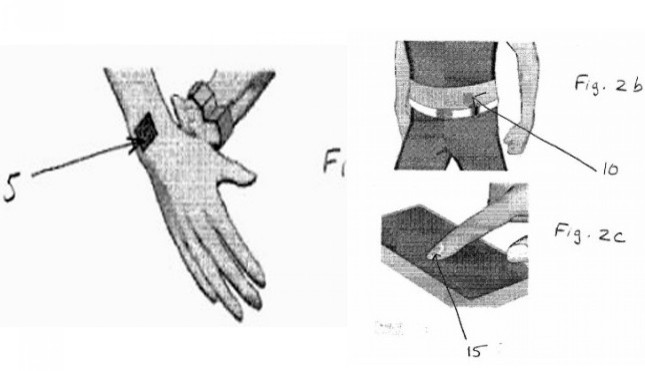Nokia Files Patent for Vibrating Tattoo...What's That?

While even the most high-end smartphones available today cannot alert owners about an incoming call, text or other notifications without a loud ring or vibrations that may go unnoticed, Nokia has come up with a brilliant idea. Unwired View has discovered a patent application Nokia filed with the U.S. Patent and Trademark Office (USPTO) for a magnetic tattoo that would alert smartphone owners when their phone rings or a text or other notification arrive.
Ferromagnetic Material
According to Nokia, the technology would involve tattooing, stamping or spraying ferromagnetic material onto a user's skin, then pairing it up with a mobile device such as a smartphone. The user could set different vibration patterns to create a range of alerts.
The tattoo ink could contain permanent magnets such as iron or magnetite, or it could use rare earth elements such as neodymium. For those against the idea of a permanent magnetic tattoo etched onto their skin, Nokia'a patent allows for other options as well, such as a temporary magnetic spray, sticky decal, stamp or maybe just a wristband. The Finnish company even envisions the potential use of paramagnetic materials that would act as magnets only in the presence of an outside magnetic field, a preferable option for people with medical implants or extra sensitivity to magnetic materials.
The application filed last week lists Cambridge researcher Zoran Radivojevic as the lead inventor of this innovation. The patent indicates a magnetic marking could be attached to a user's arm, abdominal area, finger or even fingernail.
Examples of...applications may be low battery indication, received message, received call, calendar alert, change of profile, eg based on timing, change of time zone, or any other, reads the patent filling. The magnetic field may cause vibration of one short pulse, multiple short pulses, few long pulses...strong pulses, weak pulses and so on.
Identity Check via Magnetized Markings
Moreover, the filing also indicates that such magnetized markings could be used as an identity check. According to the filing, a user could create specific magnetic impedance, basically their own magnetic fingerprint, by picking a certain shape which could act as a password. As an example, Nokia describes a laptop refusing to display content unless it verifies the authorized user is close by.
Nokia's patent suggests that their magnetic mark could be invisible - which might make this appealing to some. But in the immediate term I think users would draw the line at anything that is invasive like a tattoo or would be seen to have potential medical effects, said Marek Pawlowski, editorial director at mobile industry research firm PMN. Nokia did not confirm whether it intends to follow up its application with further research.
(reported by Alexandra Burlacu, edited by Surojit Chatterjee)
MUST READ - New iPad 3: Which Are the Coolest Cases for New Apple Tablet? (PHOTOS)
MUST READ - New iPad 3 Overheating Problem Overrated?
MUST READ - iPhone 5 Features Rumors: 4G LTE, Ultrasonic Bonding, A6 Chip and iOS 6 Will Finish Android Rivals
MUST READ - Samsung Galaxy S3 Specs: Wireless Charging, Dual Booting and Quad-core Exynos Chip Could Kill iPhone 5
© Copyright IBTimes 2025. All rights reserved.





















